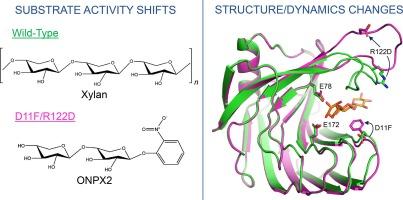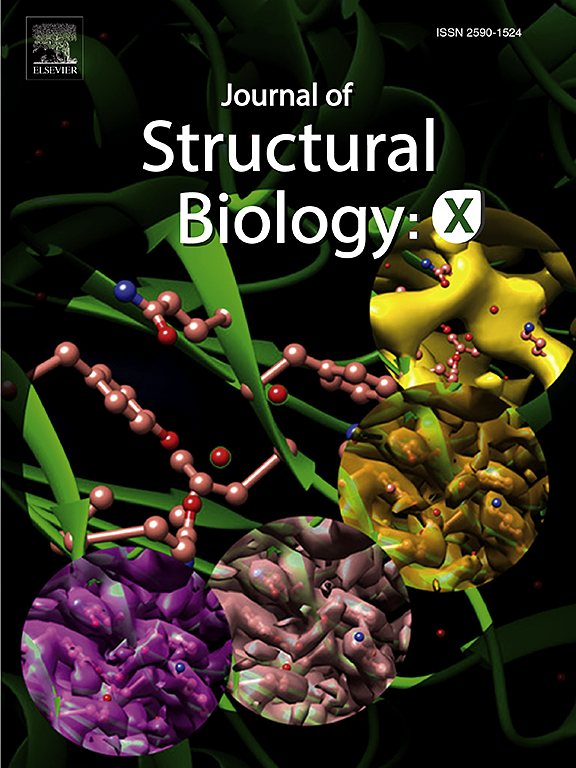Effects of Xylanase A double mutation on substrate specificity and structural dynamics
Abstract
While protein activity is traditionally studied with a major focus on the active site, the activity of enzymes has been hypothesized to be linked to the flexibility of adjacent regions, warranting more exploration into how the dynamics in these regions affects catalytic turnover. One such enzyme is Xylanase A (XylA), which cleaves hemicellulose xylan polymers by hydrolysis at internal β-1,4-xylosidic linkages. It contains a “thumb” region whose flexibility has been suggested to affect the activity. The double mutation D11F/R122D was previously found to affect activity and potentially bias the thumb region to a more open conformation. We find that the D11F/R122D double mutation shows substrate-dependent effects, increasing activity on the non-native substrate ONPX2 but decreasing activity on its native xylan substrate. To characterize how the double mutant causes these kinetics changes, nuclear magnetic resonance (NMR) and molecular dynamics (MD) simulations were used to probe structural and flexibility changes. NMR chemical shift perturbations revealed structural changes in the double mutant relative to the wild-type, specifically in the thumb and fingers regions. Increased slow-timescale dynamics in the fingers region was observed as intermediate-exchange line broadening. Lipari-Szabo order parameters show negligible changes in flexibility in the thumb region in the presence of the double mutation. To help understand if there is increased energetic accessibility to the open state upon mutation, alchemical free energy simulations were employed that indicated thumb opening is more favorable in the double mutant. These studies aid in further characterizing how flexibility in adjacent regions affects the function of XylA.


 求助内容:
求助内容: 应助结果提醒方式:
应助结果提醒方式:


